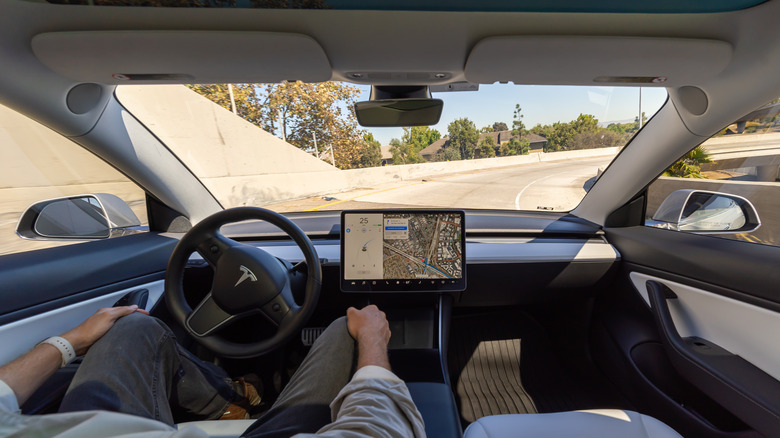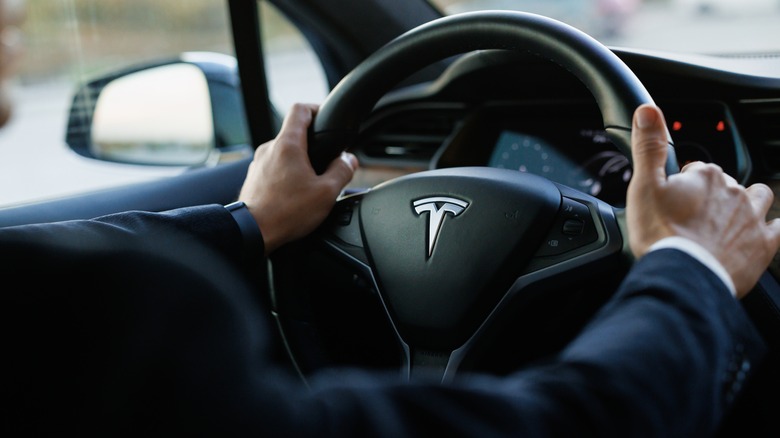You Can Honk Your Tesla Horn To Save Dashcam Clips - Here's How
A few years ago, electric vehicle manufacturer Tesla implemented a handy shortcut to save potentially important footage from your vehicle's forward-facing dashcam. But if you're new to Tesla ownership, you might not even be aware of this feature, called "Save on Honk."
Like some other features such as "Joe Mode," pressing the horn button to save dashcam footage was suggested to Tesla CEO Elon Musk via Twitter. Musk issued a simple reply of "Yeah, makes sense." But lo and behold, six weeks later, the suggested feature was added to Tesla's Holiday 2019 software update.
Yeah, makes sense
— Elon Musk (@elonmusk) November 13, 2019
Mere days after the software update, Save on Honk proved its usefulness when a Tesla driver recorded a hammer — which presumably fell off a work truck and onto the highway — flying through the air and shattering the windshield of his Model 3. Dashcam footage can also be used to capture hit-and-run accidents, driving under the influence or other erratic behavior, and even pedestrians or cyclists acting in a dangerous or unsafe manner.
Pressing the horn button will permanently save the prior 10 minutes of dashcam footage, but Tesla owners do need to take a few preemptive steps before the feature is ready to use.
You'll need a flash drive inserted
First, a formatted USB drive must be inserted into one of the vehicle's USB ports. Tesla recommends using the USB port located inside the glovebox, if available, to keep the flash drive hidden and unobtrusive. Teslas manufactured in 2020 or later actually come with a pre-formatted USB drive. But for owners that need to format their own flash drives, the vehicle can format the drive for you by pressing Controls, then Safety, then Format USB Drive. Of course, the flash drive can also be formatted the old-fashioned way — on a computer.
Next, the dashcam must be enabled by pressing Controls, then Safety, then Dashcam. Under Dashcam, you will press a button labeled On Honk and that's it. Note that On Honk can be enabled independently or in conjunction with other Dashcam modes like Auto and Manual.
Now when the horn is pressed, the previous 10 minutes of dash cam footage is saved to your flash drive. The recorded footage can be viewed either on the Tesla's touchscreen when the vehicle is in park or the flash drive can be removed from the vehicle and the footage can be viewed on a computer. Hopefully, you'll never have an incident that necessitates Save on Honk, but it's nice to know it's there just in case.

